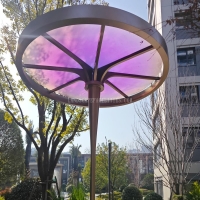Welcome to the website for landscape facilities products and knowledge.
How does the design account for easy integration with outdoor cooking or dining setups?
Modern outdoor kitchen design prioritizes effortless integration with cooking and dining areas through strategic planning and innovative solutions. The fundamental approach involves creating cohesive spaces that functionally connect food preparation zones with entertainment areas. Designers achieve this integration by implementing modular components that adapt to various layouts while maintaining aesthetic consistency across different sections.
The spatial configuration plays a crucial role in successful integration. Professionals typically position cooking stations within direct sightlines of dining areas, ensuring hosts remain engaged with guests while preparing meals. This visual connectivity is complemented by practical considerations like countertop continuity, which provides ample serving space between cooking surfaces and dining tables. The strategic placement of functional elements—such as positioning refrigeration units adjacent to both preparation and serving areas—further enhances operational efficiency.
Material selection significantly impacts integration capabilities. Designers specify weather-resistant materials that maintain visual harmony between cooking equipment and dining furniture. Stainless steel appliances often coordinate with powder-coated aluminum dining sets, while natural stone countertops might echo textures found in outdoor table surfaces. This material consistency creates visual flow while ensuring all components withstand environmental exposure.
Infrastructure planning forms another critical integration aspect. Electrical and plumbing requirements are pre-planned to serve both cooking and dining needs without compromising safety or accessibility. Built-in lighting systems illuminate work areas and dining spaces simultaneously, while strategically placed outlets support both cooking appliances and entertainment devices. Ventilation solutions address cooking odors while maintaining comfortable dining conditions.
The integration extends to storage solutions that serve dual purposes. Custom cabinetry might incorporate both cooking utensil organizers and dining accessory compartments. Smart space utilization includes hideaway features like retractable covers that transform food preparation surfaces into additional serving areas when entertaining larger groups.
Modern designs also incorporate technology integration that bridges cooking and dining experiences. Wireless controls allow temperature adjustment from dining areas, while integrated sound systems provide ambient music throughout the space. These technological elements work harmoniously to create unified outdoor living environments where culinary activities and social interactions coexist seamlessly.
Ultimately, successful integration relies on understanding the relationship between different outdoor activities. The best designs create natural circulation patterns that guide movement between cooking and dining zones, incorporate appropriate transition elements like raised planters or change in flooring materials, and ensure all components work together to form a cohesive outdoor living ecosystem that enhances both functionality and social interaction.
Related search:

Recommendation
Metal frame with gradient color acrylic combined with high-end shading landscape facilities